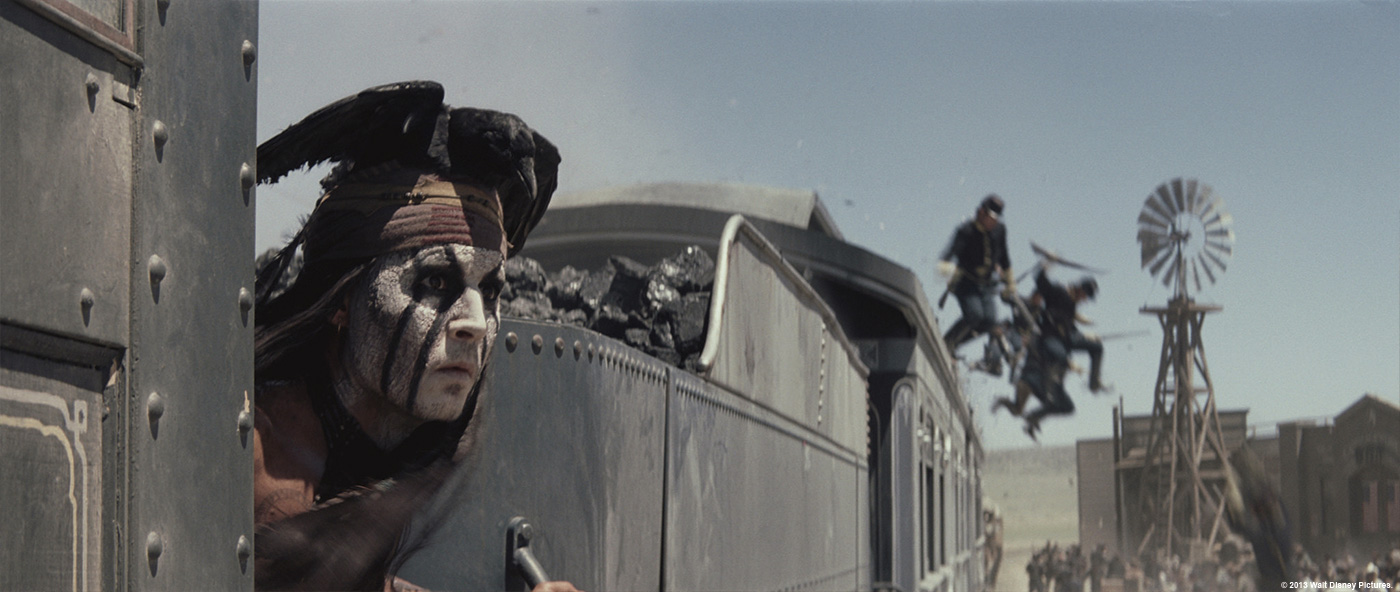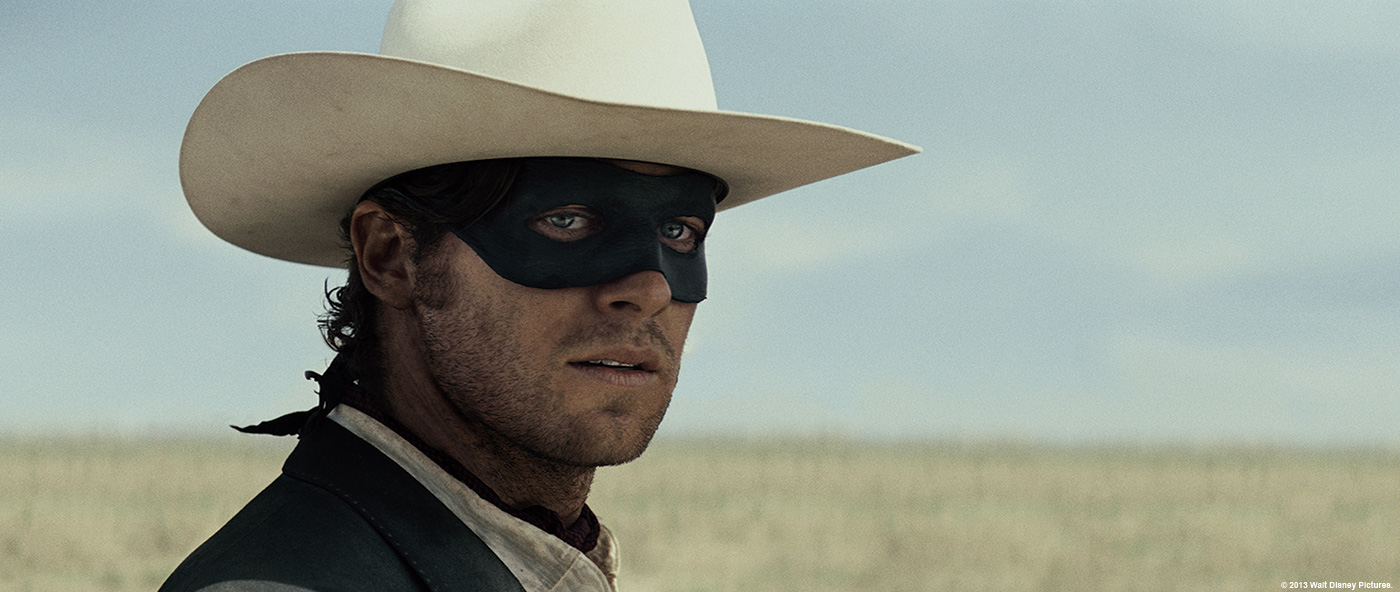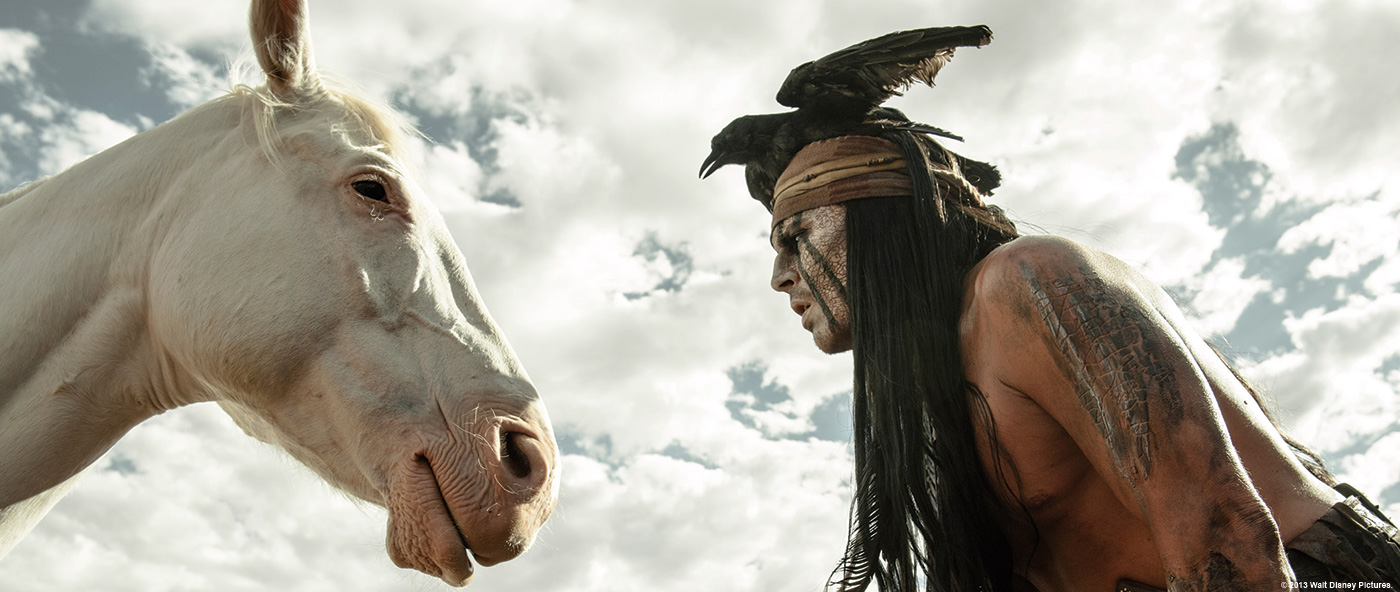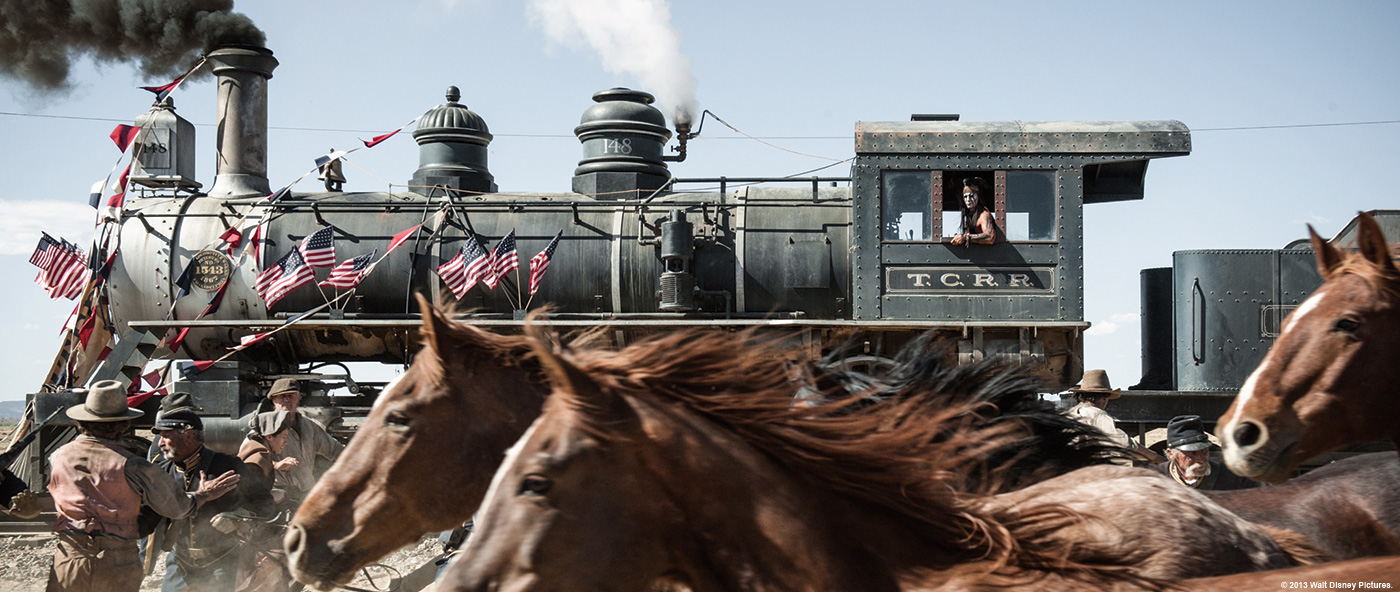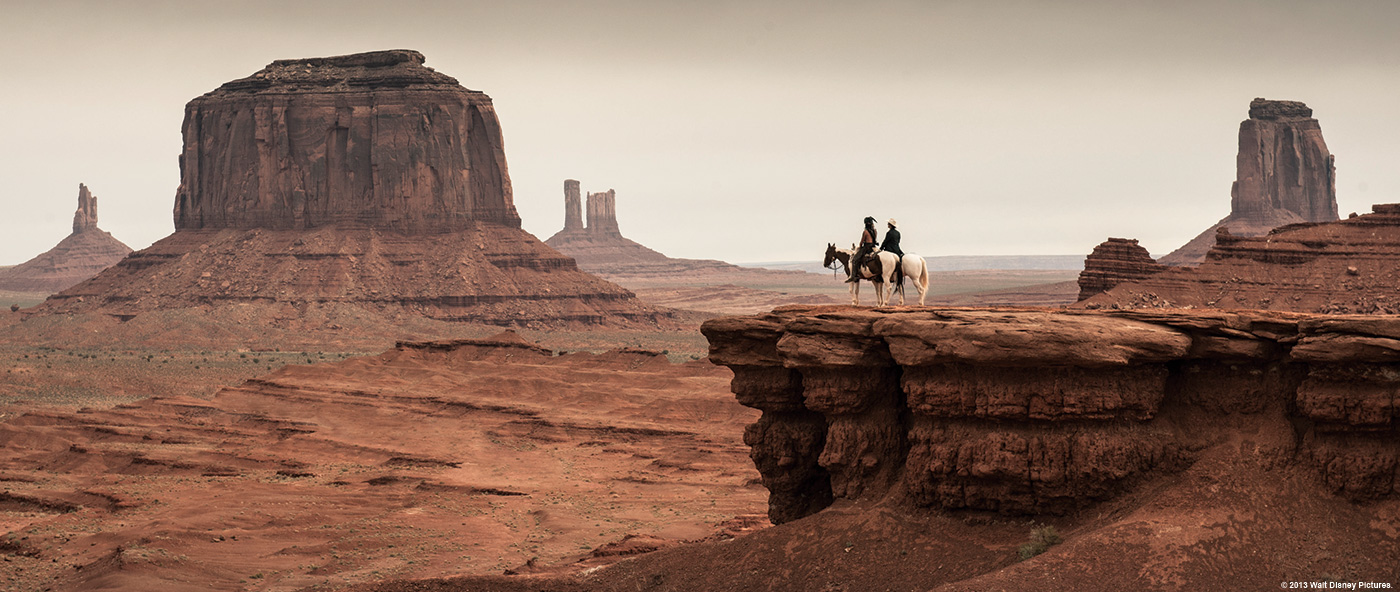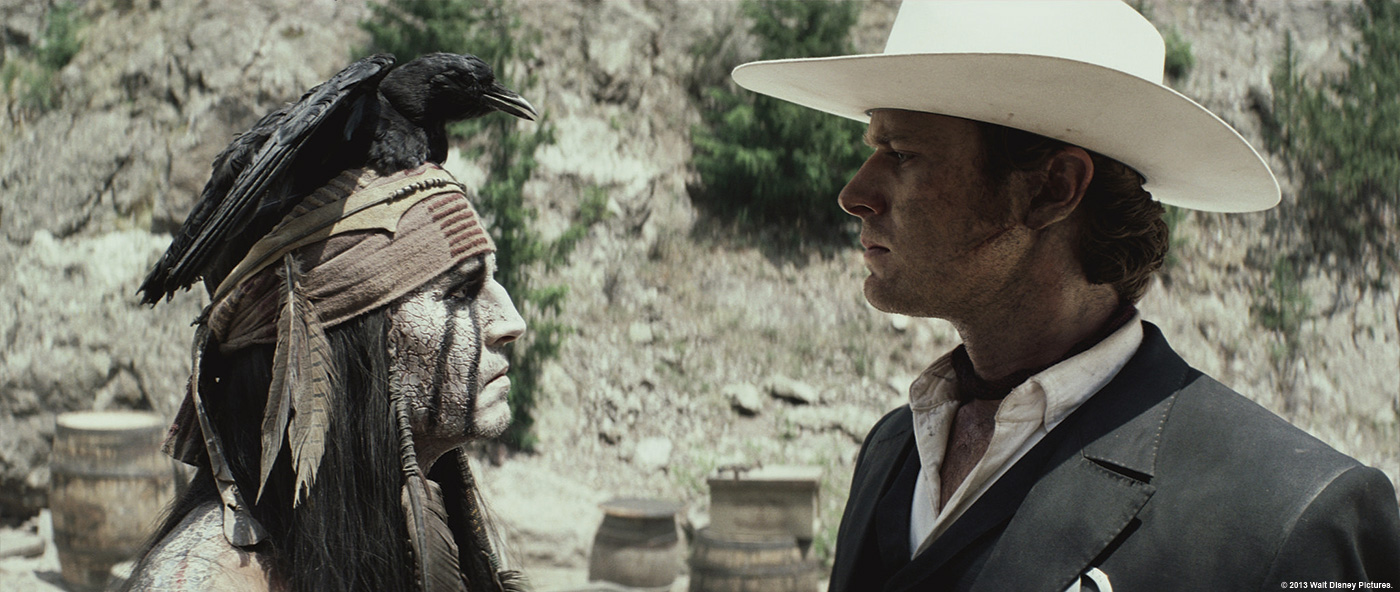Tim Alexander started his career in the VFX in 1995 at Buena Vista Visual Effects. He then joined ILM in 1997 and worked on films like CONTACT, TITANIC, STAR WARS: EPISODE I – THE PHANTOM MENACE or DEEP BLUE SEA. In 2000, he became VFX Supervisor and worked on films such as SKY CAPTAIN AND THE WORLD OF TOMORROW, three HARRY POTTER movies, THE CHRONICLES SPIDERWICK or RANGO.
What is your background?
I went to college as an Electrical Engineering major and found that the mathematics behind electrical engineering are the same as used in image processing/ compositing. I got interested in film after seeing a presentation on the visual effects of TERMINATOR 2: JUDGMENT DAY and realized how the technology could be used to create really cool visuals. I got an internship with Buena Vista Visual Effects, which led to a job with Buena Vista and later a job at Industrial Light & Magic where I have been ever since.
You worked with director Gore Verbinski on RANGO. How was this new collaboration?
I had known that animated features and live action features are different beasts, but it was surprising how different. Our collaboration revolved a lot around planning the shots and how to execute them in the real world on set versus RANGO where there were very few barriers in terms of shot design in the virtual space.
What was his approach about the visual effects?
Gore is a very savvy director in term of visual effects since he has made a number of large VFX movies and he understands the technology well. He has a very hands-on approach in the planning and execution of the effects elements. He also relies heavily on live action reference and spends the time on set to get the reference so later in post production we have live action material to base our shots on.
How (if at all) did you collaborate with MPC VFX Supervisor Gary Brozenich?
ILM and MPC’s work were largely divergent from each other but did have a couple of area of overlap. Gary and I collaborated on the specifications on the show like file formats and color science. We also collaborated on the buttes and environment for the Colby train sequence at the head of the film.
What was your feeling while reading the script on the first time with all these crazy sequences?
The script didn’t read like a huge visual effects movie. The third act in particular has very little dialogue. It wasn’t until we saw the previs for the Colby train sequence and the third act train chase that it became apparent that we had a big VFX movie on our hands. As with any project of this scale, we started breaking it down into smaller and smaller components to get our heads around what to shoot, how to shoot it and what would be approaches we would take. It definitely was daunting at times, especially when we did not have a clean solution on how to shoot something.
What was one of your typical day on set and then during the post?
Set days tended to be very long. We shot through the summer so at times had quite a bit of sunlight to work with meaning we could shoot long days. Most days we would get to set around 7am and start checking the train configurations to make sure they were right for the first setup. Most locations were far from our hotels so driving to and from set could easily burn up a couple of hours.
During post the days are more structured. We do a dailies session where we review shots with the artists at 9am, and that typically lasts for 2 to 3 hours. Midday we would reserve for meetings about shots that needed more attention and then we would do another dailies session around 4pm for a couple of hours. Really the days were about being available to review and discuss shots. Once a week I would travel to L.A. to be at Gore’s office to review shots with him and discuss sequences in progress.
Can you explain about the beautiful opening shot?
San Francisco 1930s with the Golden Gate Bridge under construction. The movie has an underlying theme of man against nature and man’s progress destroying nature. Visually, San Francisco was a symbol of that progress. We spent a long time laying out the shot getting the Golden Gate Bridge in the right spot and distance from camera and then having the city fall away from camera. The shot was prevised in pre production so we had a very good idea of what the camera move down the boy should be. On set, a huge 15-foot tall by 30-foot long platform was built to hold a dolly track and a Technocrane for us to be able to achieve the large sweeping move down to the entrance of the boy. The move was rehearsed many times so that when the light was just right at sunset we were ready to go and get our plate. San Francisco was built from pieces of a model of the real city and many textures and reference images were shot in San Francisco so we could get the look of the city at sunset correct.
How did you create the various trains?
The trains were all modeled and textured cg representations of the real trains. The models we built had to be highly detailed because we did a large number of very close-up shots on the trains. The real trains on set were used where we could, but the realities of shooting on moving trains and the danger of many of the shot designs made it necessary to have CG versions of the same trains that could be seen from any angle and close-up. We did LIDAR scans (Light Detection and Ranging – a remote sensing method used to reconstruct three dimensional objects) of all of the trains on set and photographed each train meticulously resulting in over 50,000 photos of the trains that we used to texture our CG versions.
Can you tell us more about the previz process?
The previs was done in preproduction and was used as a tool for breaking down shots, planning shoot methodologies, and as a sizzle reel. There was a team of about 6 artists working at Gore’s offices on the Universal lot. They worked very closely with Gore and their proximity to him was very important for fast turn around and creative feedback. The previs became a blueprint of sorts for the first and third act train sequences and were followed very, very, closely throughout production. We were constantly taking measurements and camera speeds off of the previs Maya scenes to use on set when setting up for shots.
How did you created the various continuous shots especially on the train?
Most of those shots were very complex multi-plate shots. For example, the shot of the train with the buffalo that ends in a close-up on John had to be shot in pieces because there really is not a viable way to shoot that all in a single take. We started with a plate of the train that was shot from a helicopter. The helicopter tried to do as much of the move into the train window as possible. We then shot a second plate of the train static where we could get the camera all the way into a close-up of John. We actually shot that plate in reverse so we were sure to be nice and steady on John. It was then up to the layout team at ILM to patch the plates together. Ultimately we had to transition from the helicopter plate to a CG train with CG background and then transition into John’s reverse printed plate with added moving reflections in the windows to get to the final shot.
The movie features many environments. How did you create these locations?
Most of the movie locations are true places that the film crew went to. We spent nearly 8 months in the four corners region in the United States shooting in some of the most amazing locations. Canyon De Chelly, Monument Valley and Moab to name a few. The third act train sequence however, the backgrounds are largely fabricated because of the specific choreography required for the train chase. Looking at the shots, the two trains are always in very specific locations in frame to tell the story of the chase. We could not find locations that had parallel tracks, much less locations that had parallel tracks in exactly the right spot, so we went for a CG-based solution. All of the fabricated environments are based on real locations however and many hours of reference footage and texture stills were taken. Throughout the process of making the environments we always looked at our live action reference to make sure we were staying true to the reality of the locations.
Did you receive specific indications or references for the landscapes?
All of the landscapes we used in the movie are based on real world locations that we were at during the filming. At every location we went to we shot stills of the area, moving footage of the area via an Alexa camera mounted onto the edge vehicle, and also took full 360-degree moving reflection environments via a secondary camera mounted adjacent to the Alexa – So there was no lack of reference to choose from. Often times a small splinter crew would shoot plates while main unit was shooting, sharing the roads we were on so that we were getting reference of the environment in the same light the main unit was shooting in.
Were miniatures or models used on this show?
Yes, we used a miniature for the bridge explosion.
How did you create the impressive bridge explosion?
The trestle bridge explosion was a combination of different techniques. Our goals with the VFX for the film were to be photoreal and keep the audience guessing about implementation. The wide shots of the bridge were shot on location. In post we made the walls of the canyon higher and added a full CG bridge with rigid body simulations of the boards breaking and flying. CG flames and practical flame ball elements were used on the bridge and CG water was used to make the explosion have interaction with the river.
The three tighter shot were done with a « miniature » built by the team at 32Ten here in the Bay Area. It was 1/4 scale and ended up about 50 feet long. The miniature was put in a shallow pool rigged for demolition and exploded. We also added some CG water interaction to one of the miniature shots. And finally, in one of the shots we used the miniature bridge and explosion in the foreground and then did a CG bridge collapsing in the mid to background. So really it was a mix and match depending on scale and framing.
Can you tell us more about the use of Plume and Fracture on this show?
We used both ILM Plume™ and ILM Fracture™ in a limited form on THE LONE RANGER. Plume was used for the flames on the bridge explosion. For objects that needed to fracture we actually modeled the pieces fractured, i.e. pre-scored to avoid going through the full Fracture pipeline. We had a ton of digital smoke to produce for the train but for that we used Houdini in our pipeline.
The final sequence is a wild train chase in the mountains. How did you approach it?
The previs was really the core of the third act chase. We used it as our bible and dissected it down into smaller and smaller pieces. We went through each shot and decided where it would be shot and how it would be shot. New Mexico, Colorado, Utah, time of day, moving or not, on an actual train or on a big rig driving down the road, bluescreen needed, these were the types of questions we had to ask for each shot. It took months of preparation to dissect each shot and many times during the shoot we had to be flexible and change our methodology based on the realities of the locations we were at. We had a large database that had every shot in it with data on camera lens, camera distances, speed of travel and planned methodology for shooting the shot.
How did you manage the shots in which The Lone Ranger is riding Silver on the train?
Almost all of the shots with Lone Ranger riding Silver on the roof of the train cars was handled via digital doubles. There is one shot where the camera is just behind Lone Ranger/Silver and follows him jumping down into the tunnel that was done with a bluescreen element transitioning to a digitial double as they fall away from camera. That shot in particular was tricky because we were locked to the perspective of the bluescreen element, so the train car and environment had to be CG in order for the perspectives to match up. For the shots of Lone Ranger on Silver riding through the passenger car, an oversized passenger car was built that the actual horse and Armie Hammer could ride through. It was funny because the train car had to be really huge and wide to accommodate the horse, but on camera it is hard to tell that it is a gigantic train car.
How was split the work between the various offices of ILM?
We did all of the work between ILM in San Francisco and our Vancouver office. Our Vancouver satellite office is an extension of ILM in San Francisco. We use the same exact software, running in the same pipeline and all of the machines, disk space and render farm appear to be on the same network. This maximizes efficiency because any asset that was checked in by an artist in San Francisco for example, could be seen and used by an artist in Vancouver without any extra effort. Because the work environment is so transparent we tended to mix and match shots by department and artist rather than by shot.
Was there a shot or a sequence that prevented you from sleep?
The ladder bridge sequence was particularly difficult both technically and artistically. The sequence changed from being shot in camera driving down the road to being shot static on a bluescreen. We quickly realized that background plates would be impossible to shoot since Gore correctly wanted the lighting of the background to match the bluescreen foreground lighting. Also, we had to tell the story of the two trains chasing each other, so even if we had shot background plates we would have had to heavily modify them. It was this point that we committed to full digital backgrounds for 95% of the shots in the sequence. This certainly kept me up at night because we had to.
What do you keep from this experience?
Shooting with trains is hard… Really hard. They are very big, dangerous and cumbersome to work with. VFX combined with live action photography is really the best way to create realism. I came away from the show with a deeper understanding of and respect for practical effects working in conjunction with visual effects to achieve photoreal visuals.
How long have you worked on this film?
From start to finish I was on THE LONE RANGER about 2 years. There were 3 phases that I took part in. Preproduction where previs, location scouting and planning how to implement shots occurred, principle photography and post production. Pre production was about 8 months, shooting was about 8 months and post was about 8 months with some overlap between the phases.
How many shots have you done?
ILM did about 422 shots for the film.
What was the size of your team?
We had roughly 170 people across all disciplines working on the show.
What are the four movies that gave you the passion for cinema?
How ‘bout 3 (laughs) :
– LAWRENCE OF ARABIA: Cinematography is amazing, truly a beautiful film. Additionally, I think the politics depicted are fascinating; every time I see the film I feel like I have a different understanding of the political situation TE Lawrence was involved in.
– JURASSIC PARK: Everyone’s favorite VFX movie of all time. I was working at BVVE at the time and we went to see this movie as a « field trip ». I realized while watching the movie how far ahead ILM was compared to what we were doing. It gave me the desire to learn and grow in VFX.
– DEAD MAN: I think the cinematography and visual style of this movie is amazing. Black and white none the less.
A big thanks for your time.
// WANT TO KNOW MORE?
– Industrial Light & Magic: Official website of ILM.
– 32Ten: 32Ten Press Release about their work on THE LONE RANGER.
// THE LONE RANGER – VFX BREAKDOWN – ILM
© Vincent Frei – The Art of VFX – 2013

